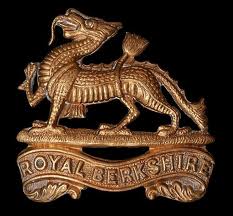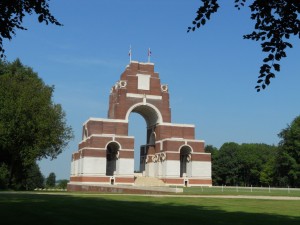 Frederick Hall. Died 16th November 1916
Frederick Hall. Died 16th November 1916
Frederick was born in 1897 in Wokingham, to father, Frederick and mother, Margaret.
Frederick joined the regular 1st Battalion of the Royal Berkshire Regiment around 1914 and was soon on his way to France. On the 16th November 1916 he was killed; it was the last day of the Battle of the Somme. John Chapman provides an entry for the 16th:
‘16th November 1916
At 03:00 on the 16th the enemy artillery opened up again and maintained a heavy barrage until 07:30, following which all was quiet until 17:00 when they opened up again close to battalion HQ. This caught some men of the Dorset Regiment who were moving up to relieve another unit of 99th Brigade. The battalion managed to get supplies of water brought up at 09:15 and at 17:00 the Manchesters tried again, completing the relief at midnight. During the day the battalion lost 2 men killed, 5 wounded and one missing according to the casualty list. Those who died on this day were:-
22614 Henry Braxton of Liverpool, 39274 George Garner of Brampton, 19600 Frederick Hall of Wokingham, 10277 Harry Roberts of Reading ‘
Name: HALL, FREDERICK
Rank: Private
Regiment/Service: Royal Berkshire Regiment
Unit Text: 1st Battalion.
Age: 22
Date of Death: 16/11/1916
Service No: 19600
Additional information: Son of Frederick and Margaret Hall, of 37, Peach St, Wokingham, Berks.
Grave/Memorial Reference: Pier and Face 11 D. Memorial: THIEPVAL MEMORIAL. On 1 July 1916, supported by a French attack to the south, thirteen divisions of Commonwealth forces launched an offensive on a line from north of Gommecourt to Maricourt. Despite a preliminary bombardment lasting seven days, the German defences were barely touched and the attack met unexpectedly fierce resistance. Losses were catastrophic and with only minimal advances on the southern flank, the initial attack was a failure. 
In the following weeks, huge resources of manpower and equipment were deployed in an attempt to exploit the modest successes of the first day. However, the German Army resisted tenaciously and repeated attacks and counter attacks meant a major battle for every village, copse and farmhouse gained. At the end of September, Thiepval was finally captured. The village had been an original objective of 1 July. Attacks north and east continued throughout October and into November in increasingly difficult weather conditions. The Battle of the Somme finally ended on 18 November with the onset of winter. In the spring of 1917, the German forces fell back to their newly prepared defences, the Hindenburg Line, and there were no further significant engagements in the Somme sector until the Germans mounted their major offensive in March 1918. The Thiepval Memorial, the Memorial to the Missing of the Somme, bears the names of more than 72,000 officers and men of the United Kingdom and South African forces who died in the Somme sector before 20 March 1918 and have no known grave. Over 90% of those commemorated died between July and November 1916. The memorial also serves as an Anglo-French Battle Memorial in recognition of the joint nature of the 1916 offensive and a small cemetery containing equal numbers of Commonwealth and French graves lies at the foot of the memorial. The memorial, designed by Sir Edwin Lutyens, was built between 1928 and 1932 and unveiled by the Prince of Wales, in the presence of the President of France, on 1 August 1932 (originally scheduled for 16 May but due to the death of French President Doumer the ceremony was postponed until August). The dead of other Commonwealth countries, who died on the Somme and have no known graves, are commemorated on national memorials elsewhere.
37, Peach St, Wokingham, Berks.
